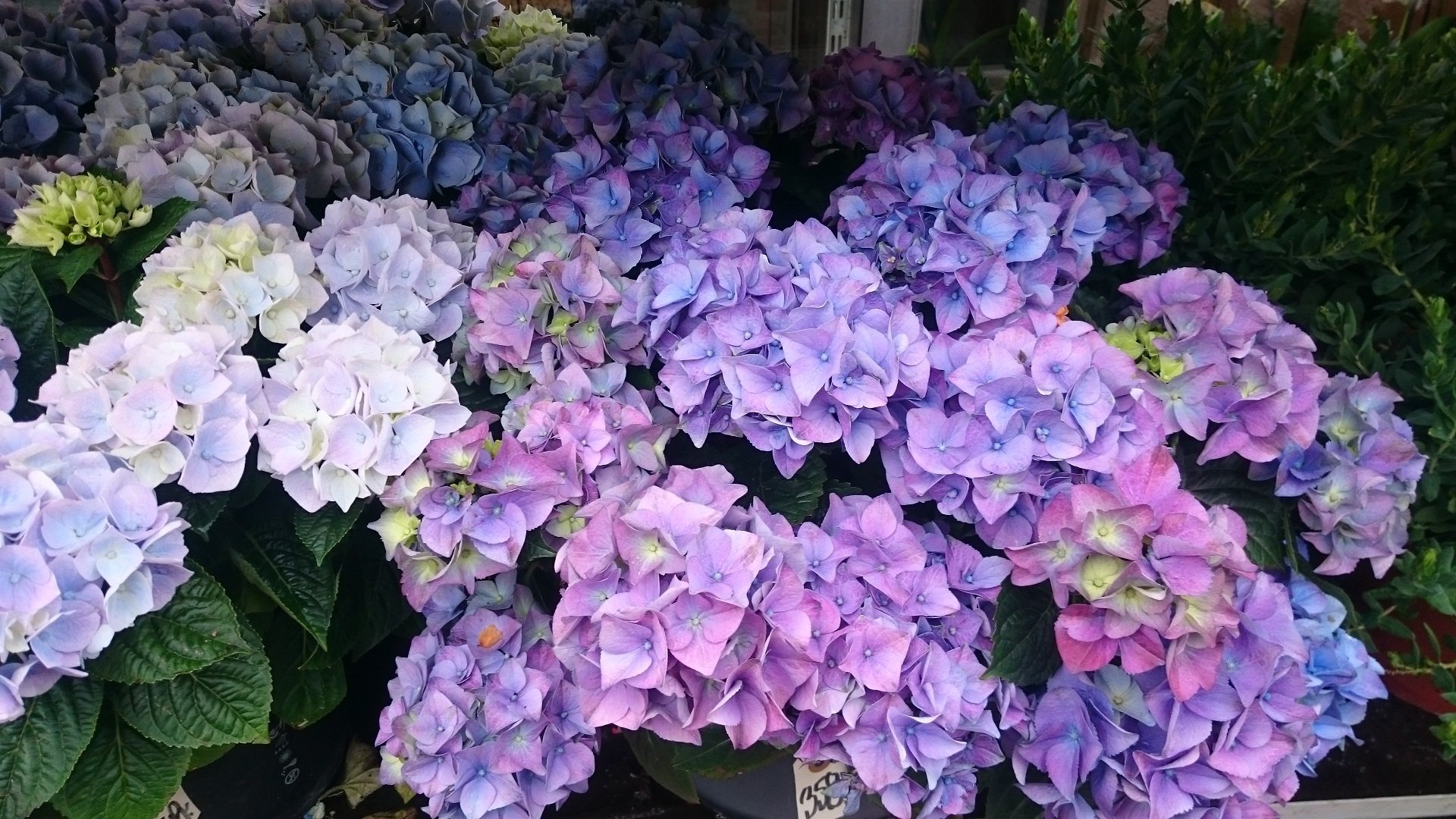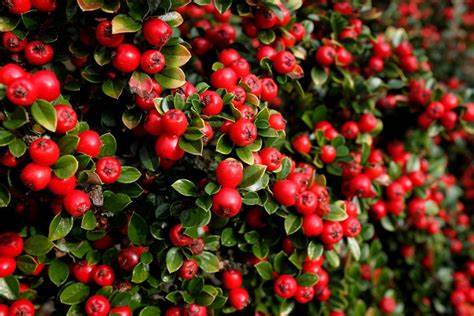Growing & Caring for Crabapple Trees: Easy to Follow Tips for Beginners
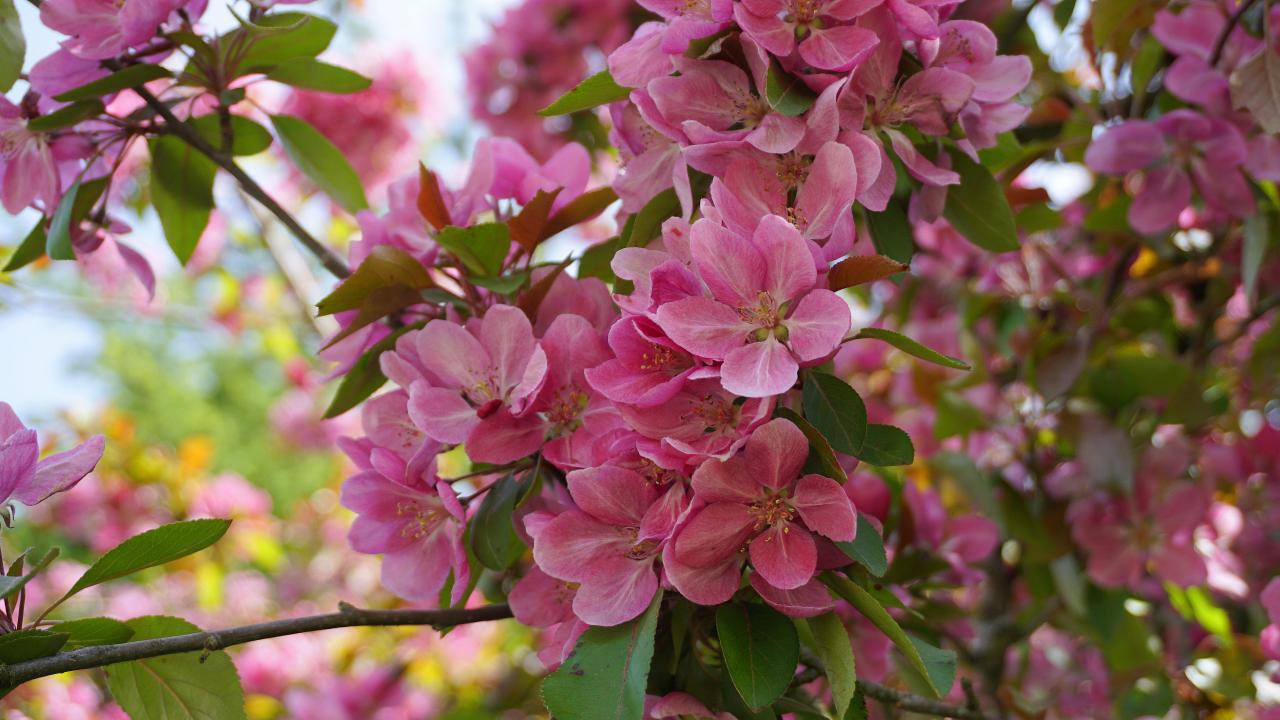
Table of Contents
Crabapples are small flowering and fruiting trees belonging to the family Rosaceae and the genus Malus. These plants are a perfect choice for growing in your gardens because they produce striking fragrant white, pink or red flowers and nutritious apples and have beautiful green foliage which turns into vivid autumn colours.
These crabapple trees and their fruits are smaller in size than their general apple counterparts. These apples might have a diameter of less than 5 cm, and that is why they are called crab apples! They are commonly used for making jellies, cider, etc. These are a couple of reasons why they are called ‘the jewels of the landscape’. If you want to learn to grow or care for a crabapple tree in your garden, you have come to the right place!
Growing Conditions of Crab Apple Trees
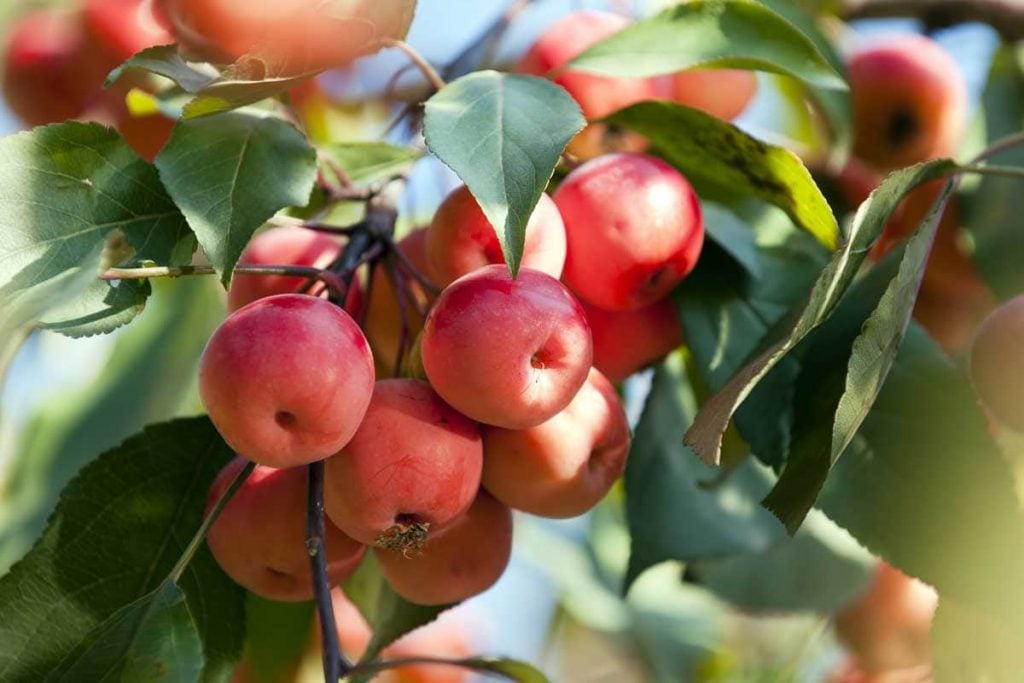
These plants can grow up to 15 to 25 feet tall and about 12 to 20 feet wide, but some varieties might grow bigger as well. The leaves might grow up to 6 cm and have a rounded edge. The flowers mature into fruits of 2 to 5 cm in diameter during spring and might be greenish-yellow in colour. They may sometimes have flecks of red and white, which indicate that they are ready to be consumed, though they are usually preferred by birds and small animals.
They need to be exposed to the sun to grow merrily, and they require highly fertile, well-drained and loamy soil with an acidic to neutral pH range of 5.5 to 6.5. The trees will have a greyish-brown bark, and they will become gnarled and twisted as they age, giving them a wise appearance. These trees might be host to lichens or parasitic mistletoe and might often be covered in them. However, these helpful parasites don’t cause any harm to them.
How to Plant a Crabapple Tree
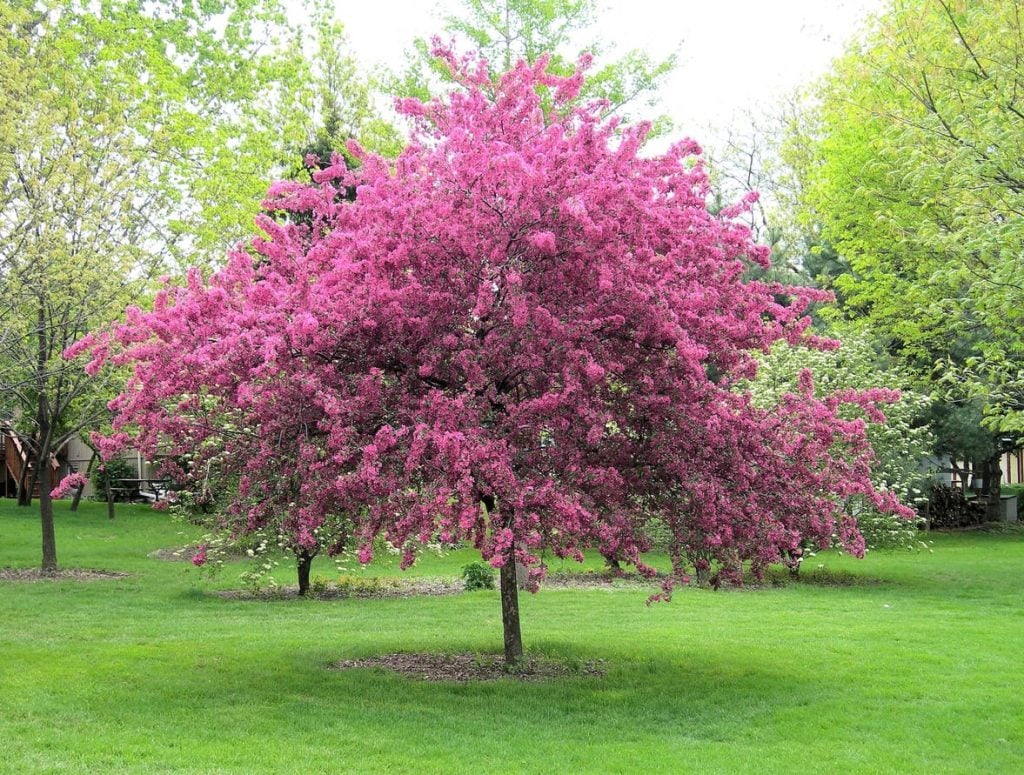
These trees might grow up to 40 to 60 years, and therefore, planting them might be a great investment for the generations to come.
First, choose a location that is sunny where these trees will be able to thrive.
Dig a hole twice as large as the root ball and make sure that the soil is acidic and highly fertile.
Loosen the ball of the root and place it in the hole.
Cover it with a thin layer of soil and water gently so that you don’t disturb them.
For the first few weeks, water frequently and deeply enough so that it can penetrate the entire length of the root.
They might grow at a medium rate of 12 to 24 inches (30 to 60 cm) per year and take about three to five years to flower.
When Do the Crabapple Trees Blossom and Fruit
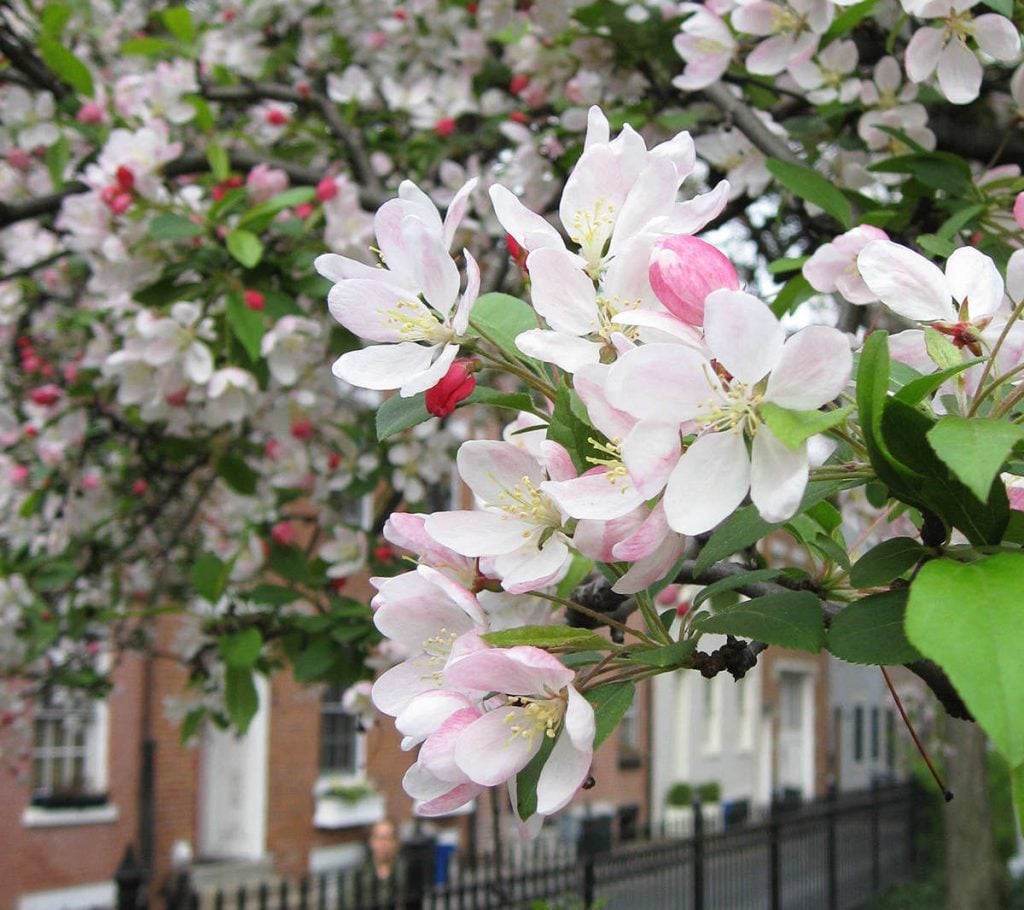
Most of the crabapple varieties, such as Siberian, prairie, wild sweet crabapple, etc., flower for a four to five-week period during mid to late spring (March, April or May). If there are extreme weather conditions, such as hot or colder days, the flowering periods can also become shorter. Some of these trees have a single, double or semi-double layered of flowers looking like beautiful mini-reses, while others have fringed and cupped petals. They come in several colours, such as pink, white and red also. Fruits are large or small depending on the variety planted, and smaller fruits are usually preferred because they don’t fall from the tree due to their weight and become rotten.
How to Prune Crabapple Trees
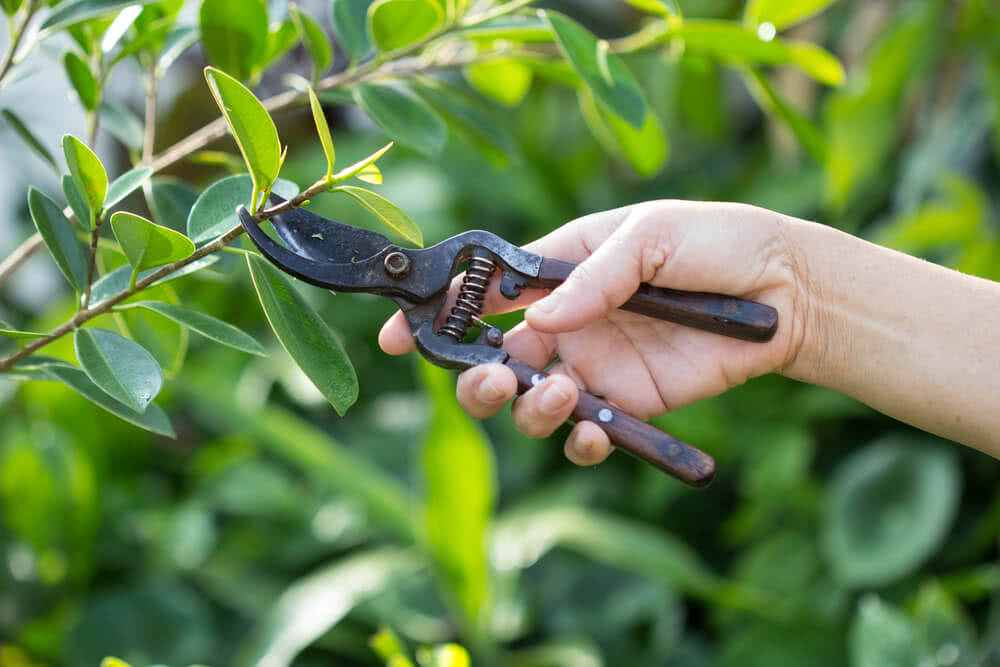
These crabapple trees need to be pruned annually. However, you can trim the dead branches and other smaller water sprouts (where there are no fruits) occasionally. Make sure not to prune them during the growing or flowering season (spring, especially), as it will hinder their growth significantly. If you are pruning large branches, make sure to use a pruning saw.
If you prune them during winter and not fall, they will be exposed to more pests and infections that will take longer to heal as well. You can prune them spaciously during winter and allow good circulation. You must be careful enough so that you prune less than 20%, as pruning more than that will damage the plant. If some branches are growing at odd angles, you can prune them away.
Tip: Prune in such a way that a lot of sunlight enters the centre, as this will lead to more blossoms and fruits.
How to Propagate a Crabapple Tree

Since this is a difficult process, many prefer to buy professional grafts and just plant them in their garden, saving time and effort. There are 2 ways in which you can propagate, either from the branches or the seeds. Propagating from the branches is more difficult as you need to follow a detailed and specific procedure and need growing hormones also. Therefore the easier way is explained here. Even if you propagate from hardy trees that are highly disease resistant, it still doesn’t guarantee your newer grafts will have the same qualities.
Collect the fruits and dry the seeds so that you can start planting them. You can plant them first in smaller pots or containers containing potting mix and peat moss. Place the seeds and cover them with a thin layer of soil and water them after placing them in a warm location. Cover them with plastic covers and when they germinate, remove the cover and grow them so that they are about 6 inches. Then transplant them into bigger containers. Till they grow for up to 18 inches, make sure to grow them indoors and protect them from harsh climatic conditions outside. Then slowly expose them to outside conditions.
How to Save Crabapple Trees from Pests
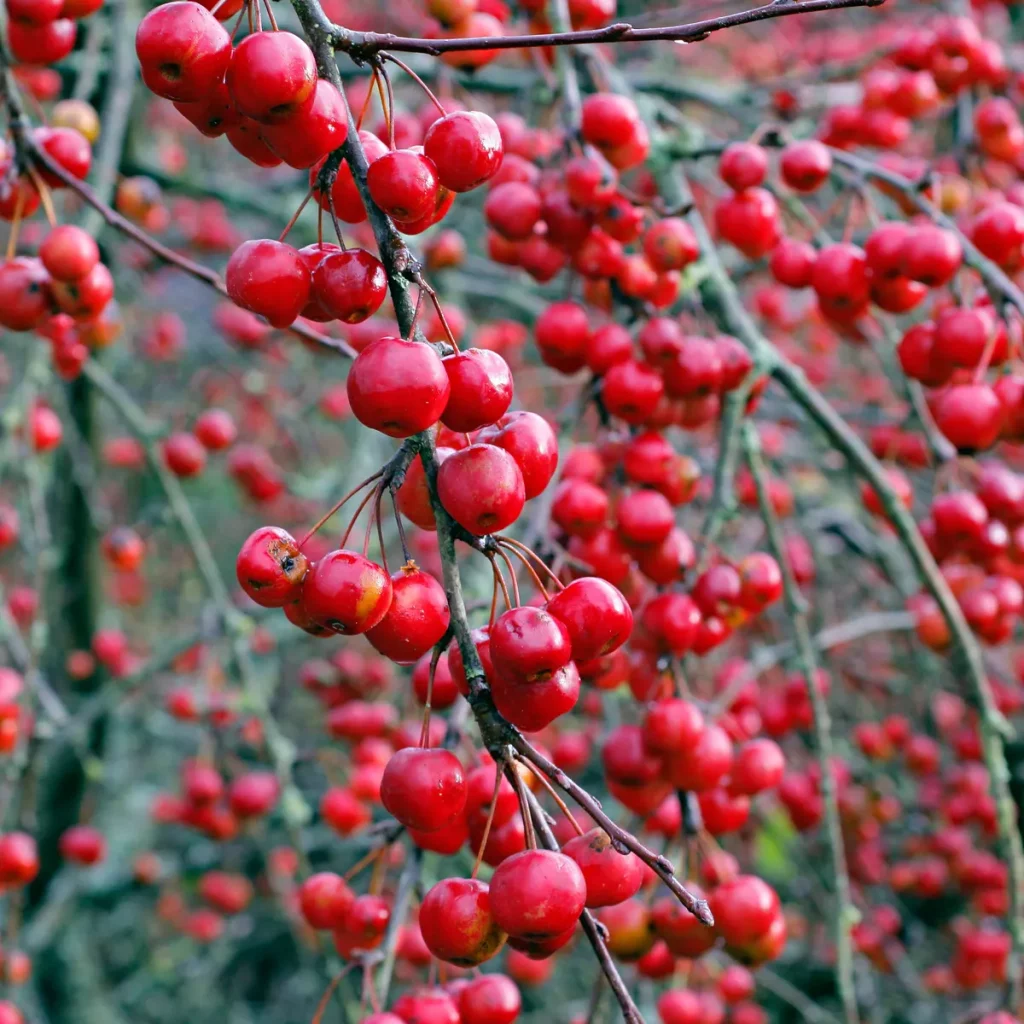
Crabapple trees are susceptible to cedar apple rust, apple scab and fire blight. Cedar apple rusts are fungus that produces very bright orange or red spots on the apples. You can wait to see if this infection goes away, but if leaf loss occurs, then there is cause for concern. If your crabapples are affected by scab, then they become unfit for eating. The leaves have brown spots, and some even turn yellow and fall off. Fire blight is caused by fungus and is pretty dangerous as it can kill off entire trees or parts of them like the branches, leaves or fruits. Younger trees are especially vulnerable to large-scale damage, so protect your crabapple and take measures when you see the first changes.
Several hybrid variants have been cultivated which are resistant to these also, and researchers at the University of Minnesota suggest that planting these disease-resistant versions is the best solution to the problems caused by the pests. In addition, fungicides can be applied to manage apple scabs and cedar apple rust.
How Much Water and Sunlight Does Crabapple Tree Require
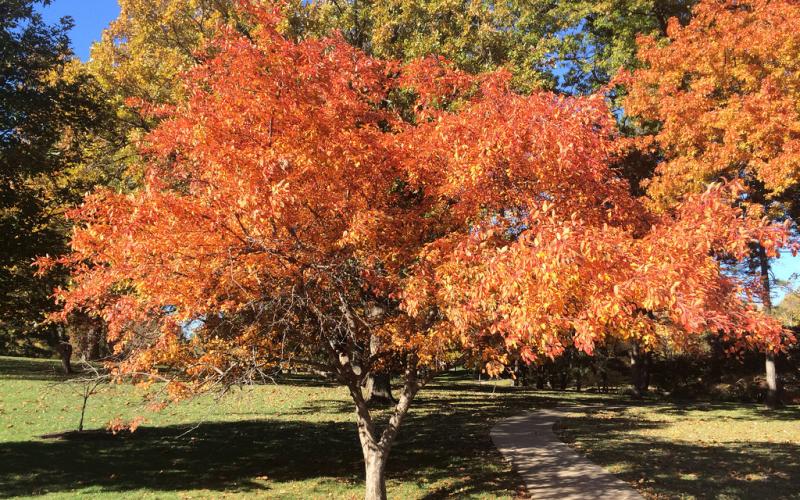
For the first year or so, make sure to water the plant frequently according to the weather so that the plant receives at least 1 inch of water per week. When the climate is specifically hot, make sure to provide up to 2 inches of water. Once the roots become established and the tree becomes stable, you can start watering it less. But even then, watering them during dry spells is advised for ideal growth. These flowering and fruiting plants might manage with less water, but the downside to that is that they will reduce the number of blossoms and fruits that they produce. So not watering them and allowing them to maintain on their own is a gamble. If you apply a thick layer of mulch around the base of the tree, it will retain moisture and will require less water in this situation.
You need to expose these trees to a minimum of 6 hours of sunlight, and they don’t need to be partially sheltered. Therefore, they can be directly exposed to the full sun also. The general rule of thumb is that if they are exposed to more sunlight, they are more likely to produce blooms and fruits in larger numbers.
Do Crabapple Trees Require Fertilisers
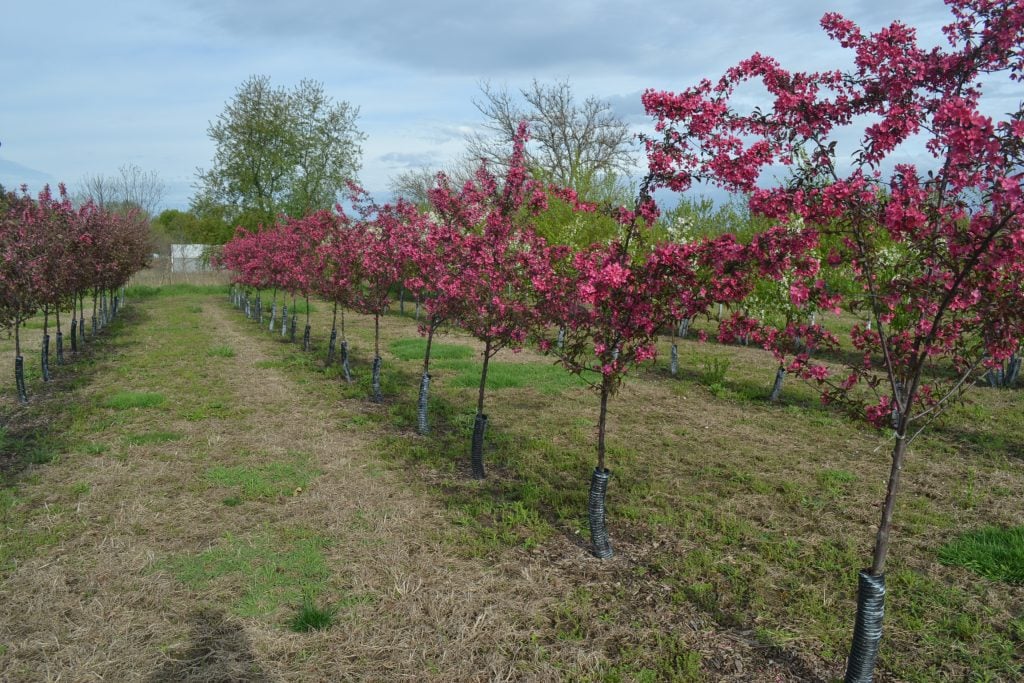
As long as these crabapple plants are planted in fertile and well-drained soil, they need extra fertilisation. But it is always best to provide extra support if you notice fewer leaves, fruits or blooms. You can improve the quality of the soil by adding some fertiliser compost in spring or by applying slow artificial fertiliser before newer growth emerges. The best fertiliser for crabapple trees is an NPK one called Nitrogen-Potassium-Phosphorous fertiliser with a ratio of 10 in all three substances. You can also use all-purpose fertiliser as these varieties will adjust and react well to those also. Liquid fertilisers might also be a good solution for the ideal growth of crabapples.
Know Their Size and Requirements Before You Start Growing Them
You can choose one of the following varieties to be planted in your garden after understanding their requirements and their benefits. These are just the top 5 varieties which are commonly planted, but there are around 90 varieties for you to choose from!
1. Adams
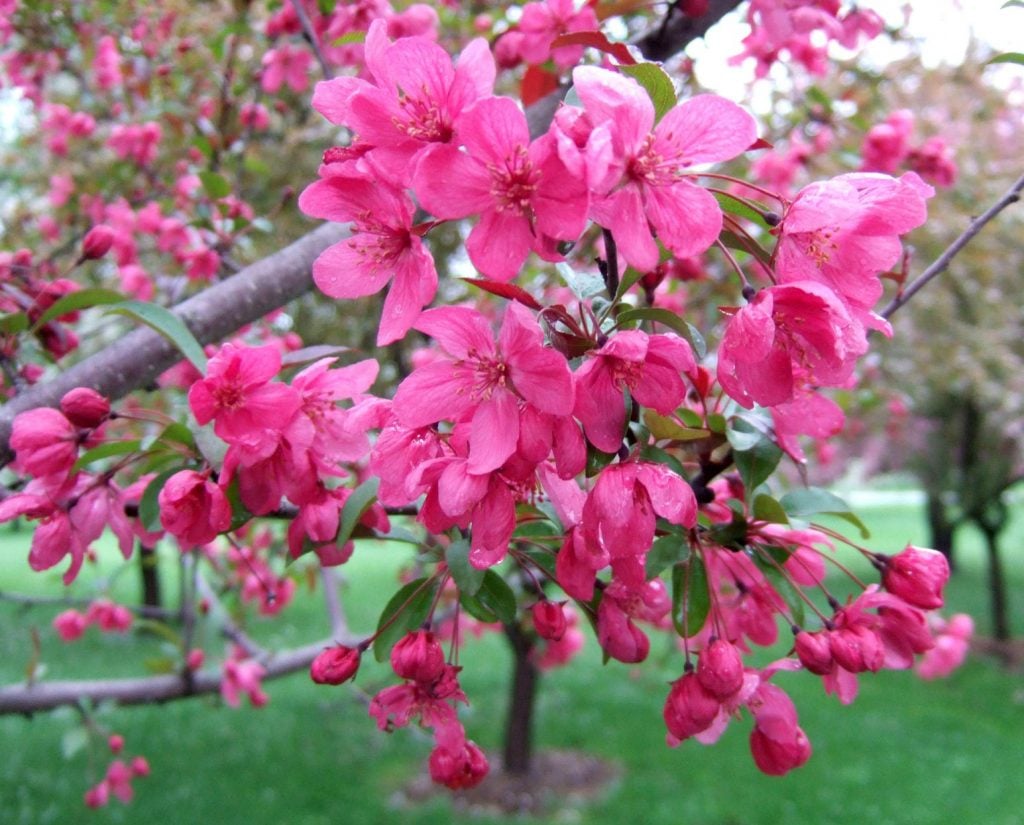
These are small flowering crabapple trees with small red fruits and deep pink blossoms. This variety, due to its magnificent colour, attracts many birds to your gardens. The fruits will mature by the fall season, and this variety has good resistance to a majority of crabapple pests and diseases. It might grow up to 25 feet tall.
2. Callaway
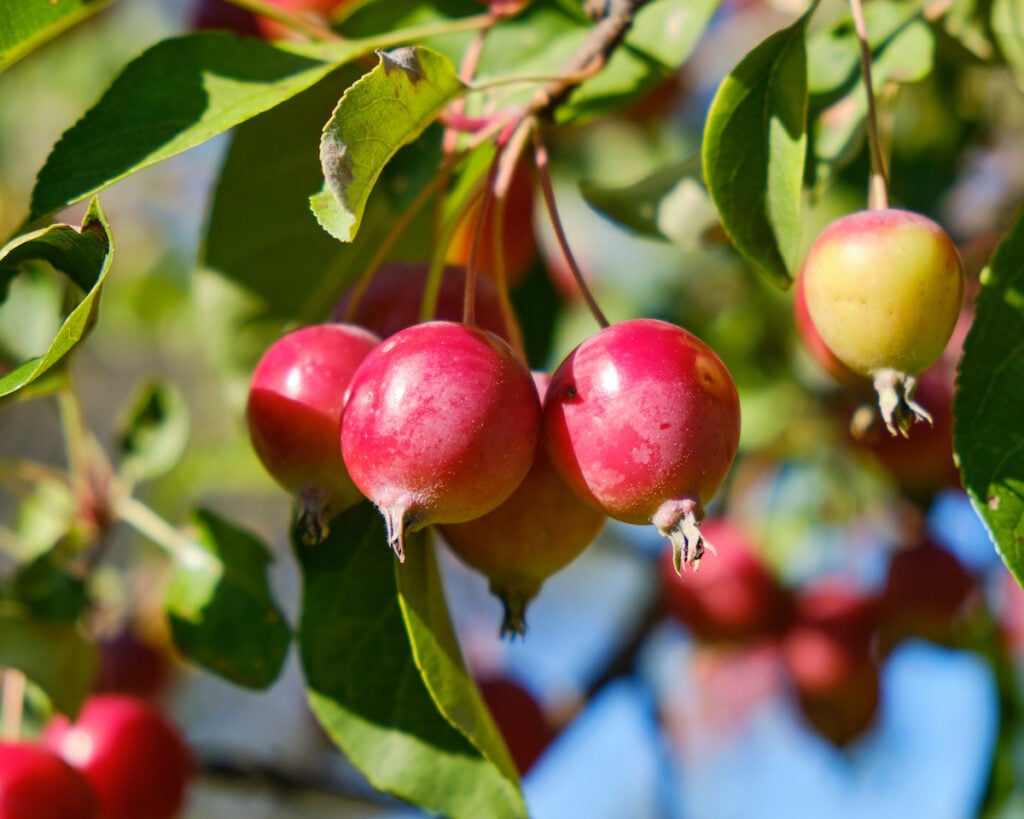
This variety’s trees grow up to 25 feet tall and about 20 feet in spread, and the fruits are usually bigger than usual crabapples. It produces beautiful white flowers during spring that emits a subtle fragrance. The leaves turn into a variety of shades of red, yellow and orange in the fall, making for a spectacular view. This variety with good resistance can sustain throughout hot and humid summers also, an added benefit!
3. Adirondack
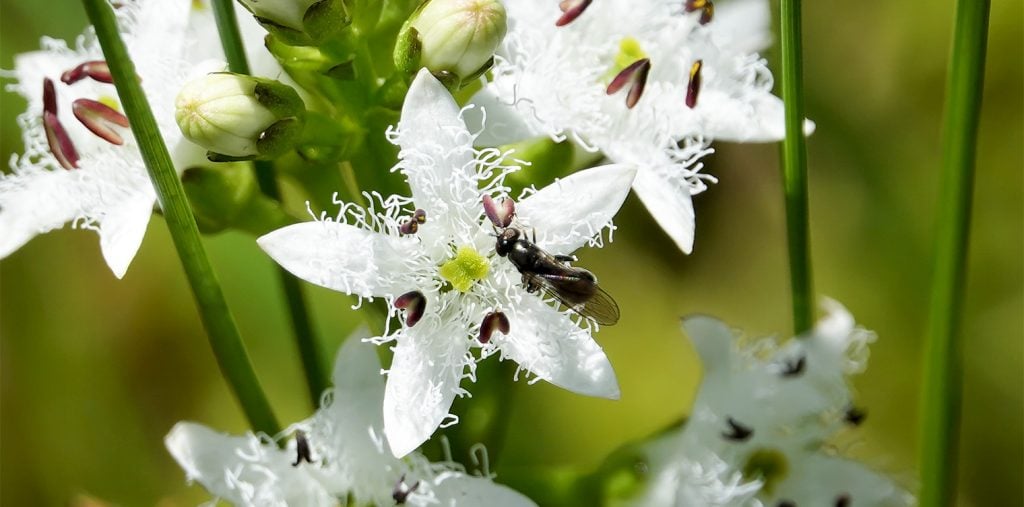
One unique aspect about this variety is that it grows upright and therefore is a perfect candidate to be grown as a hedge in your compact garden. It has beautiful white blossoms, and the fruits are reddish or orange in colour and will be there before late winter. The leaves turn into a beautiful shade of yellow during fall. It also has great resistance and grows up to 18 feet in height and around 10 feet in spread.
4. Cinderella

This variety has a unique name and characteristics. This is a dwarf crabapple plant that will fit into containers even in an extremely small garden. But its small size doesn’t compromise its beauty and utility. It produces white blossoms and golden yellow crabapples! It also boasts great resistance to diseases and pests. It will grow up to around 8 feet tall and 6 feet in spread.
5. Harvest Gold
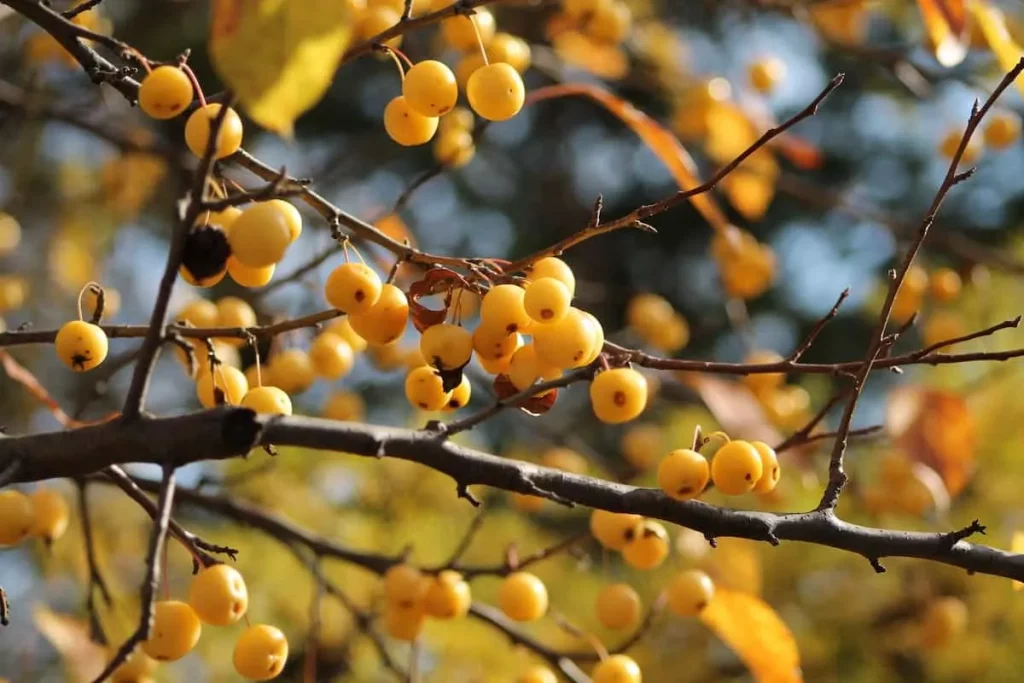
It produces golden crabapples, which are considered one of the best. It produces these fruits during winter, and its characteristics make it a good ornamental plant, as it has pink buds which bloom into white flowers. It has good resistance to some of the major crabapple diseases. It can grow up to 25 feet in height and spread.
Summing Up
All in all, the crabapple tree is commonly grown as an ornamental plant in the UK as they have beautiful blossoms, striking foliage during fall and tasty, edible fruits. Although propagating them on your own might be difficult, growing and caring for them is a relatively easy task. They are susceptible to a few diseases and pests, so make sure to choose a variety that has good internal resistance to them.
You can prune these plants before winter so as to encourage more flowering and fruiting. You need to water them early on as they grow, but no need to after they are established. Although they do well without fertilisers, they might grow extremely well in their presence.
Overall, these beautiful and useful plants make great centrepieces for your gardens as they attract a host of colourful birds and insects also!
Frequently Asked Questions
Is Crabapple Tree Worth Growing?
These crabapple trees are small, produce beautiful blossoms that range in colours from white and pink to red, produce edible apples that are also of different colours and have striking yellow, orange or red foliage during fall. The apples are highly nutritious, and the tree, on the whole, is great for the environment as it creates a home for small birds and insects. They can be easily grown and taken care of also. So the short answer is that they are an excellent choice for your gardens.
Are Crabapples Edible and How Do They Taste?
Yes, of course, these apples, which are about 5 cm in diameter, are absolutely edible. They have a high acid and pectin content. So they are commonly used to make jellies, jams and candies. They have a great sour and tangy flavour which is slightly different from the common bigger apples. They are also a great source of vitamin C and are highly nutritious as well.
Are Crabapple Trees Resistant to Pests and Diseases?
Just like other varieties of fruits and flowers, these crabapple trees are also susceptible to diseases and pests like cedar apple rust, apple scab and fire blight. These problems can be threatening to the health of the tree, and they can be reduced by pruning the diseased part of the plant. But the ultimate solution to deal with these problems is to choose a highly resistant variety that will grow well.

![15 Hardy Evergreen Shrubs that Are Perfect for Pots [UK]](https://staging.thearches.co.uk/wp-content/uploads/Evergreen-Shrubs-That-Are-Perfect-For-Pots.jpeg)
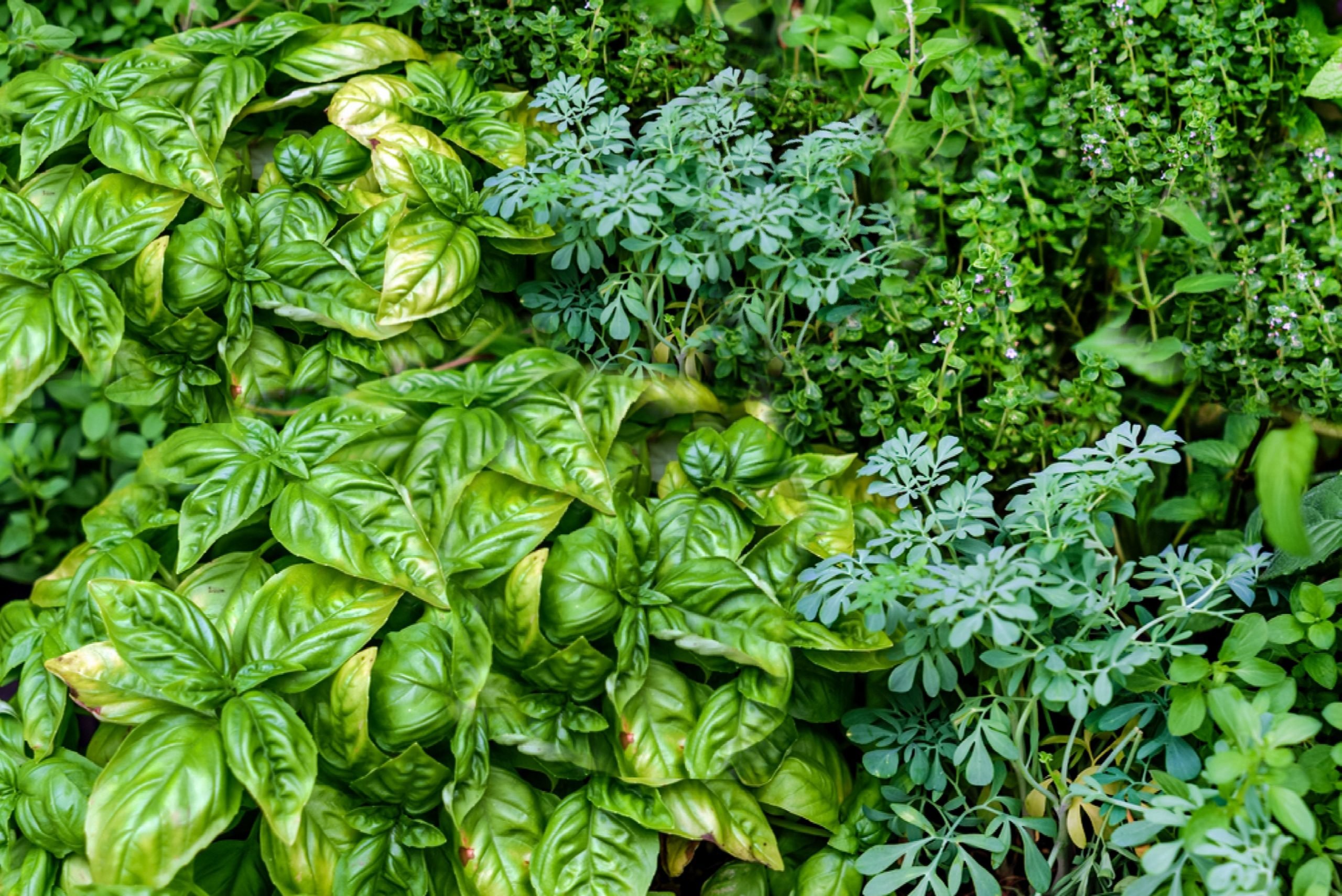
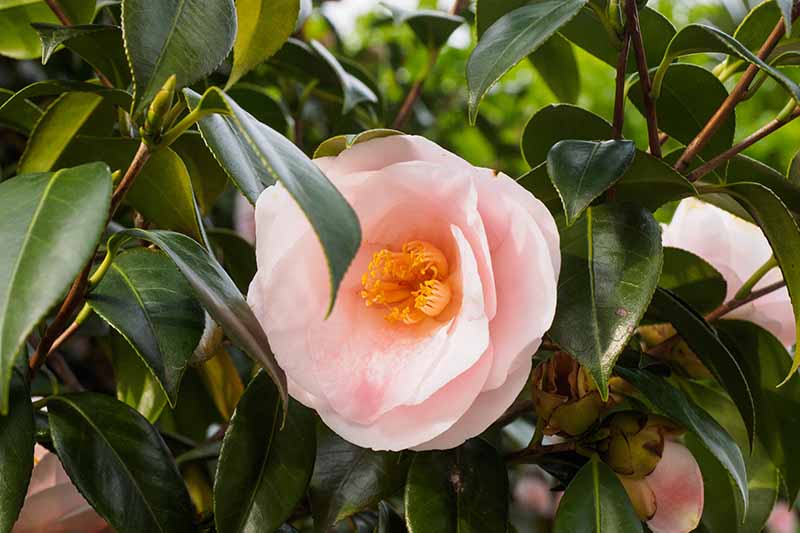
![How To Grow and Maintain Areca Palm Houseplants [Dypsis Lutescens]](https://staging.thearches.co.uk/wp-content/uploads/How-To-Grow-Care-For-Areca-Palm-Houseplants.jpg)
